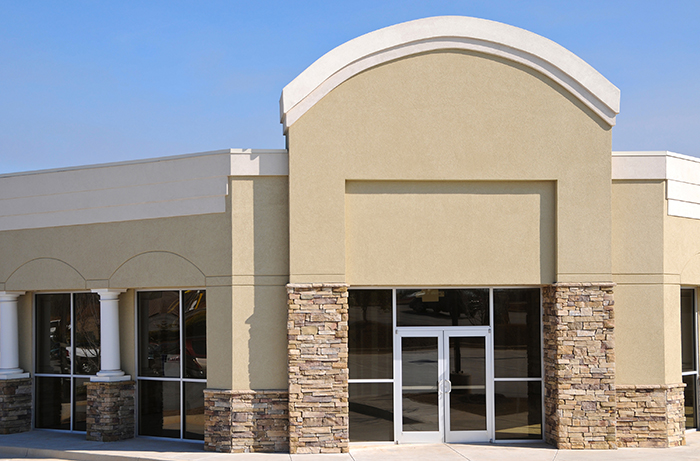The Execution Challenge
Making Your Marketing Plans a Store-level Reality
The profit gap
Most retailers recognize that there is a gap between the marketing strategies they craft in their head office and the marketing program that is executed in each store. And a lot of bottom line profit can slip through that gap. For a c-store with $1M in annual merchandise sales, a 5% drop in execution can result in a net loss of $2,250 per store. For a 200-store chain, this amounts to $450,000 annually.
In this three-part series, GSP explores strategies for closing the gap between the head-office marketing plan and store-level execution. Part 1 details how better execution starts with better data. Part 2 focuses on fostering improved execution through targeted communication to the field. And Part 3 will focus on how retailer leaders can better leverage the insights gathered in stores to create a culture of top-level execution in the field.
Part 1: Closing the execution gap with better data
One of the greatest challenges store employees face in executing the marketing plan is determining which parts of the plan actually apply to their store. Marketers in the head-office often lack accurate data about the needs of each store, so they must make “educated guesses” about what merchandise the store can promote and which types of POP they can display. In a recent survey of Retail marketing professionals, GSP found that 65% of marketers felt that this lack of information about store profiles had a negative impact on store financials. The link between poor profiles and poor results is the execution challenge.
So the first step in any plan to close the “execution gap” should be a plan to build—and, more importantly, maintain—a detailed profile of each store in the chain which marketers can use to tailor their plans to the needs of each store. Most retailers start by cataloging merchandise characteristics and the POP needs of each store. Below is a list of other attributes to consider as part of the profile.
- Store format. Record the architectural details for each store, including square footage, building features, store layout and décor package.
- Merchandise profile. Capture the quantities and size variations of merchandise areas, category destinations, fixtures, displays and all signage locations.
- Fixtures and equipment. Fixturing and equipment play a major role in the implementation of marketing programs. It’s important to record quantities and measurements for all fixtures and displays in the store as well as equipment and other physical assets.
- Competitor details. Marketers will often want to target their marketing and– in some cases- their capital spending to stores in especially competitive markets. So store profiles should include lists
of competitors within the store’s trade circle.
- Points of interest: Retail executives may want to adjust merchandising plans, promotional activity
and even labor scheduling for stores that are near points of interest that impact consumer traffic. For example, retailers with stores near university campuses may want to feature their coffee offering more heavily or conduct university-themed marketing activity.
- Photos. Each site profile should also include a complete set of digital photos of the location (interior and exterior) to capture the appearance of the store, improve understanding and speed of decision-making.

Having this data and real time intelligence at your fingertips increases the site-specific visibility needed to effectively drive execution of your retail strategy, improve operational compliance and in-store results.
Even harder than building store profiles is the task of keeping the profiles up to date. Routine maintenance and field-level decisions about how to equip stores will result in changes at the store-level that are often not communicated to the “keeper of the data.” But retailers can implement the following key practices to ensure that data remains accurate:
- Leverage store rides to update store profiles.
The best retailers make sure that marketers and their head-office staff are routinely in stores speaking with store personnel and reviewing how their growth initiatives are impacting the in-store experience. Yet too often the lessons learned during these visits are not memorialized in a structured format. Managers will often email themselves and others about issues they see in the field, without documenting the issues in a format that facilitates trend reporting. Retailers should implement a practice of using store rides to verify store profiles. Some leading retailers will even print store profile data for each store before visiting sites, not only to check the data but to understand how store environments may impact the store’s financial performance.
SEE ALSO:
GSPSurveyor™ Mobile allows your field team to track their store visits
- Online surveys, when managed with the field in mind, can work.
A number of survey tools enable retailers to build online surveys and distribute them to field employees through email links. Such surveys can be very helpful in gathering quick, simple updates from the field. For example, a retailer could send a survey to simply ask store managers whether they are adjacent to a particular competitor. However, to avoid distracting store employees from their customers, retailers should develop guidelines on how and when to use online surveys. Such guidelines should clarify the number of surveys to be sent, the type of questions the field can reasonably answer and the length of each survey.
SEE ALSO:
Online Surveys are a cost-effective alternative to collecting store data
- Define who owns the data.
While many will want access to the store profiles, it is essential to clearly define who has responsibility for updating the various data points tracked. Often, no individual wants to take on the responsibility for managing the entire database. But retailers can share responsibility: for example, if data is stored in a spreadsheet, retailers can create worksheets for each department and assign a representative from that department as owner of that particular worksheet.
SEE ALSO:
GSPSurveyor™ gives you control of your store profiles
|